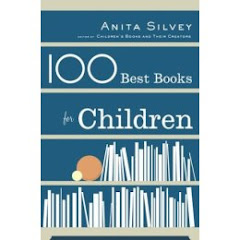
CRISS CROSS by Lynne Rae Perkins
Book Review: John Newbery Award
Criss Cross by Lynne Rae Perkins
Bibliography
Perkins, Lynne Rae. 2005. CRISS CROSS. New York, NY: Greenwillow Books. ISBN 060092726
Plot Summary
Debbie, age fourteen, wishes something would happen…SOON. She frequently spends time with her friends Lenny, Hector, Phil, and Patty sitting in the pickup listening to a radio show called Criss Cross. This book shifts between the life and times of various characters that are interwoven to create CRISS CROSS.
Critical Analysis
The Newbery Medal winner, Lynne Rae Perkins, pens CRISS CROSS, a book filled with various sub-plots that incorporate Haiku, poems, prose, and question-and-answer format. Art is found scattered throughout the book in a variety of mediums that include black and white photography, pencil, and ink. Many pictures are quirky sketches.
The story takes place in Seldem, a suburb in perhaps the central US during the 1970’s. Debbie, Hector, and their friends struggle with issues like relationships, self-concepts, and trying to fit into common cliques among peer groups. While most young adult novels focus on issues such as divorce, sex, rape, drug and alcohol abuse, this novel’s most risqué concept is driving without a driver’s license.
Debbie and other characters would “criss cross” or interact with others throughout the novel which explains the symbolism of the title. Debbie finally connects with someone unexpectedly, Peter from California, who is only visiting. At the end, Debbie feels there is no one for her, she “criss crosses” again and connects with Hector. CRISS CROSS shows teenagers who are trying to find their niche in the world. During this process, Debbie and Hector are believably sarcastic and insecure which makes them identifiable to others who may be of this age. Perkins reveals the characters personalities through a balance of narrative revelations about what they are thinking, as well as, through dialogue between the characters.
The beginning of this novel leaves the reader confused by the choppiness of the writing. The book provides a smoother read by the halfway mark. It is my opinion that this is symbolic of the uncertainty of youth followed by the learning curve that Perkins characters acquire near the end.
The only intriguing storyline that threads its way through the book is the necklace that says “Debbie”. This necklace changes hands many times until it finally is returned to its original owner. Debbie and Hector were to be brought together by the necklace but alas, the moment passes and the connection is lost.
This novel was mostly dull and had it not been an assignment, the book would have been promptly returned to the library. I believe that anyone under the age of fifteen would find the book disinteresting due to the adolescent feelings, lack of defined plot, and choppy writing style.
Review Excerpts
"Writing in a wry, omniscient third-person narrative voice, Perkins deftly captures the tentativeness and incompleteness of adolescence," said Award Committee Chair Barbara Barstow. “With seeming yet deliberate randomness, Perkins writes an orderly, innovative, and risk-taking book in which nothing happens and everything happens."
Young teens will certainly relate to the self-consciousnesses and uncertainty of all of the characters, each of whom is straining toward clarity and awareness. School Library Journal
Few cultural references set the book in the 1970s, but most readers will find their contemporaries in these characters. Best of all are the understated moments, often private and piercing in their authenticity, that capture intelligent, likable teens searching for signs of who they are, and who they'll become. Booklist
Connections
- Discuss identifiable lessons that are found throughout the story.
- Write an alternate ending to the story.
- Write and illustrate, “What If” (For example: What if Debbie went to the movie with Lenny? What if Russell turned in the “Debbie” necklace to the school Lost and Found? What if Lenny hadn’t taught Debbie how to drive?)
- Map the path of the necklace throughout the story.
- Read Lynne Rae Perkins’ companion novel to CRISS CROSS, ALL ALONE IN THE UNIVERSE.
Photo courtesy of www.amazon.com


